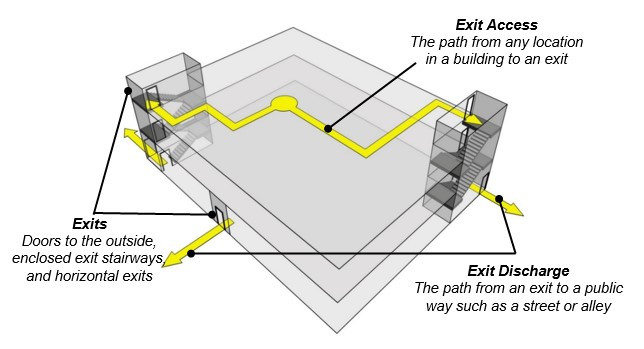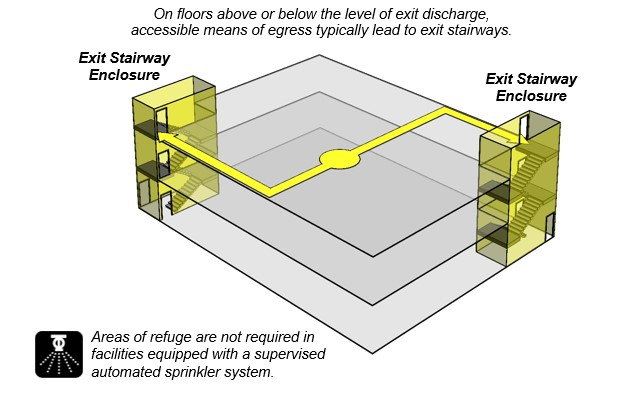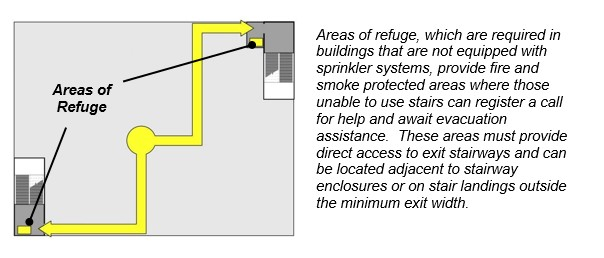Required Means of Egress [IBC §1007.1 (2003), §1003.2.13 (2000)]
The IBC requires at least two means of egress from all spaces and buildings with few exceptions. Some spaces and buildings are allowed to have one means of egress if the travel distance to an exit is short and the occupant load is low. For example, a business occupancy with no more than 30 occupants and a maximum exit access travel distance of 75 feet is permitted to have a single means of egress. More than two means of egress are required where the occupant load is 500 or more (at least 3) and 1,000 or more (at least 4). The IBC requirements for accessible means of egress apply to new construction; accessible means of egress are not required to be added in alterations to existing facilities.
An accessible means of egress, as defined by the IBC, is a “continuous and unobstructed way of egress travel from any point in a building or facility that provides an accessible route to an area of refuge, a horizontal exit, or a public way.” Where more than one means of egress is required from any accessible space, each accessible portion of the space must be served by at least two accessible means of egress. Accessible spaces can be served by one accessible means of egress only where the IBC permits one means of egress.
Accessible Means of Egress
Accessible spaces must be served by at least two accessible means of egress with few exceptions. Accessible means of egress must extend from all accessible portions of a room or space. The IBC specifies maximum travel distances to reach an exit.
Accessible means of egress can share a common path of egress travel as allowed for means of egress by the applicable building or life safety code (§207.1).
The IBC (2003) permits one accessible means of egress from:
-
wheelchair seating in assembly areas with sloped floors where the common path of travel meets aisle requirements for assembly areas and
-
mezzanines served by an enclosed exit stairway or elevator equipped with standby power.
Exit Access on Floors Above (or Below) the Level of Exit Discharge
On floors above or below the level of exit discharge, accessible means of egress must lead to exit stairways, horizontal exits, or to elevators equipped with standby power. These are locations where those unable to use stairs can await assisted rescue by emergency responders. It is standard operating procedure for emergency responders to check these locations first for anyone needing assistance.
Accessible Means of Egress Leading to Exit Stairs
Areas of Refuge




User Comments/Questions
Add Comment/Question